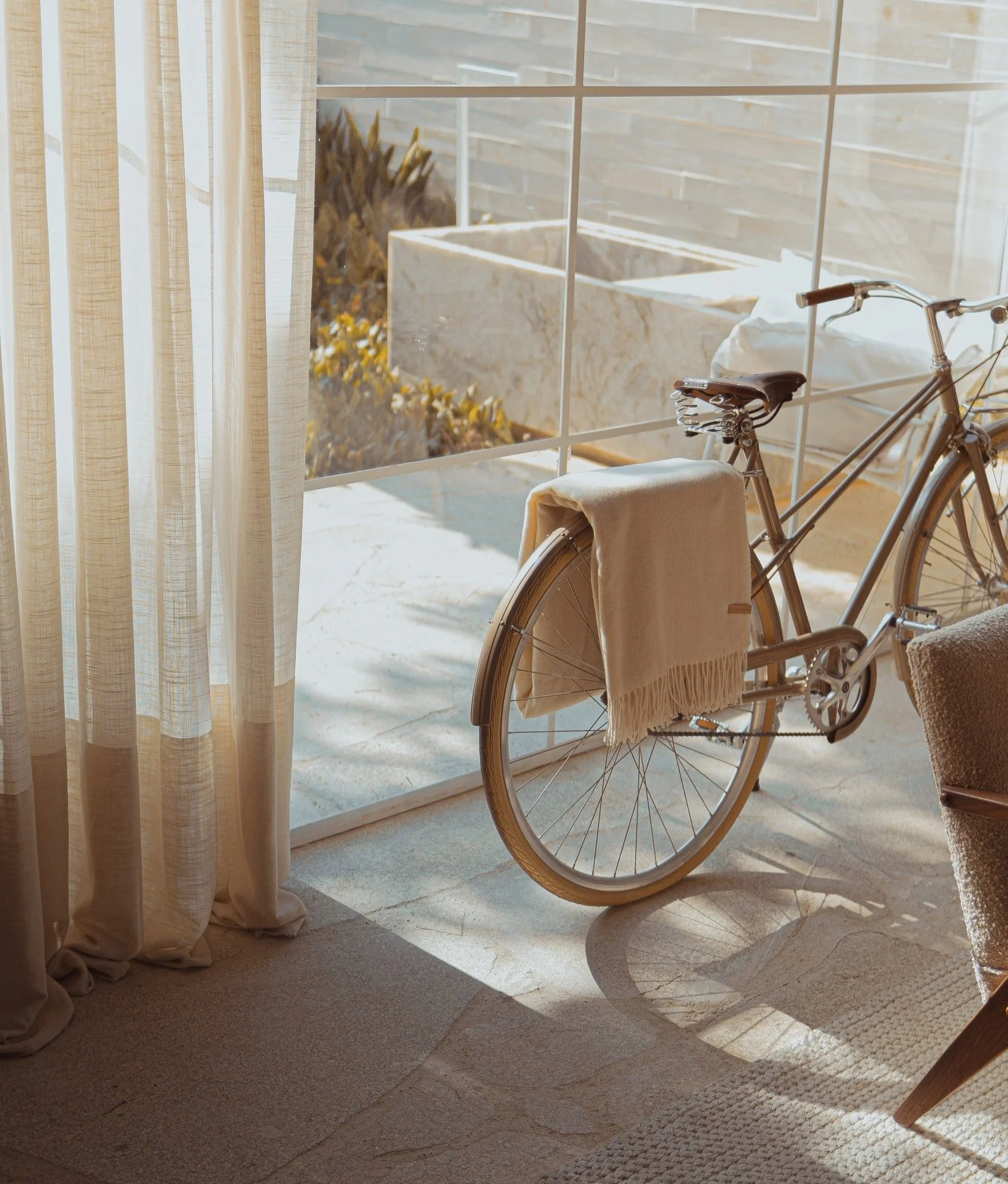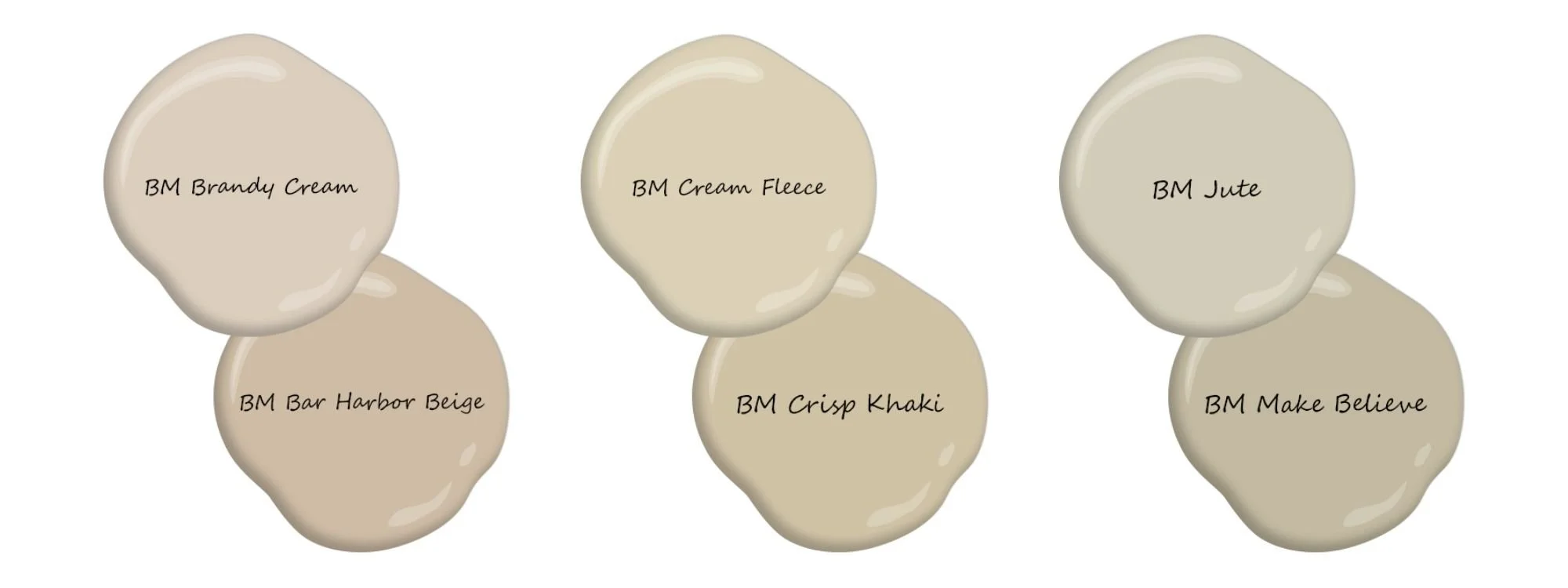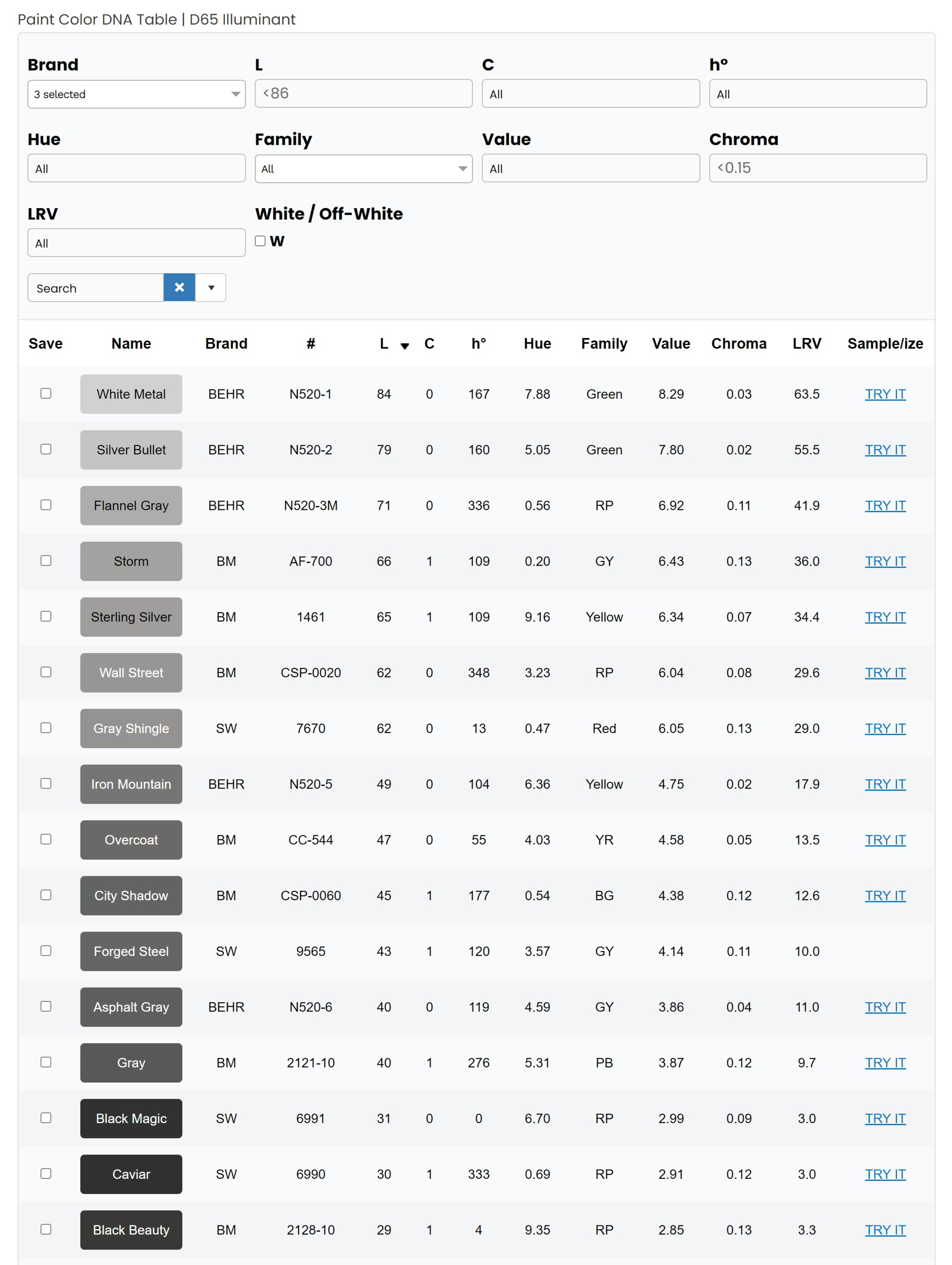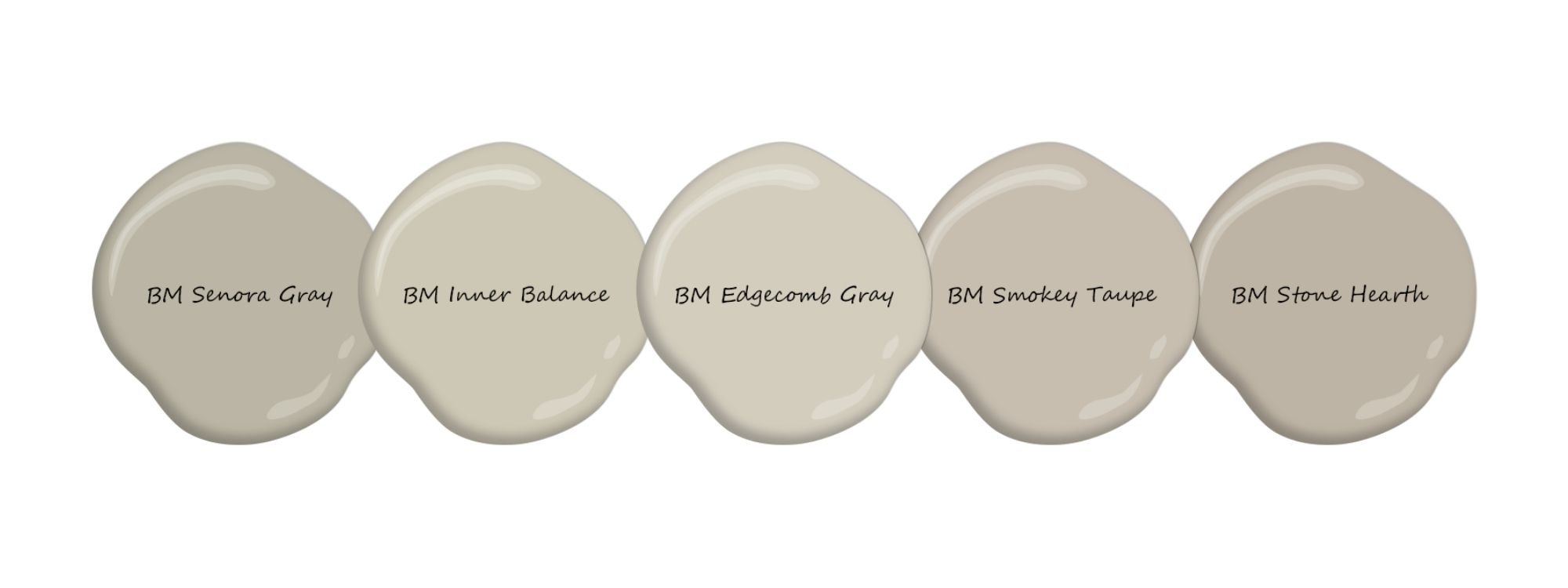How to Identify Neutrals & Undertones
Our homes are usually full of neutrals, from tile to carpet to backsplash and countertop. Neutrals are colours with so little chroma (colourfulness) that they seem to lack colour altogether. However, they nearly all have underlying colours which most designers and colour experts refer to as “undertones” .
These pesky little undertones tend to reveal themselves at the most disheartening times — usually after spending all weekend painting, only to be exhausted (and slightly horrified) by the results. The good news is: you can prevent these unpleasant surprises by understanding and coordinating the colours in your space, an effort which is CRUCIAL to the visual flow of your home.
In other words:
When choosing paint colour, textiles, and other finishes for your home, it’s less about what YOU WANT, and more about what your HOME NEEDS.
The truth is, your fixed finishes and major furniture pieces call the shots when it comes to wall colour.
This post focusses on how to identify neutrals and their undertones so you can build consistency in your colour palette.
So what neutrals am I working with? And what are the undertones!?
You can identify neutral colours and their undertones by COMPARING them to KNOWN neutrals with KNOWN undertones.
Comparison really is one of the best ways to see colour clearly. I mean, most beiges look pretty darn BEIGE till you line ‘em all up and start comparing!
Beige
Beige is a warm, orange/yellow-based neutral. Though many people are still recovering from the pink and gold beiges of the 2000s, beige is remerging in the 2020s in a lighter, fresher way. It looks beautiful with soft whites, creams, clays, greens, and blues – there’s SO much gorgeous modern beige out there!
Beiges range in undertone from pink (warmer) to green (cooler - though these push into greige territory). Warmer beiges go well with materials like linen and travertine. Light warm beiges are useful for updating Tuscan brown-trend homes, but don’t pair well with other neutrals .
Cooler beiges towards the green end of the spectrum tend to be more modern and versatile. NOTE: some designers refer to green beige as “tan”, and some green beiges can be classified as “greige”.
Guiding Beiges
Sample beiges leaning from warmer (pinker), to mid-range (orange-yellow), to cooler (greener).
Beiges like Brandy Cream / Bar Harbor Beige are quite pink and should only be used when your fixed finishes require it. Beiges like Cream Fleece / Crisp Khaki are fairly balanced. Anything cooler than Jute / Make Believe would be firmly in the “greige” category.
The guiding beiges above offer undertone-specific reference points, but another easy way to see beiges clearly is by comparing them to a popular, well-known beige. Benjamin Moore’s Shaker Beige was extremely popular for many years, so it serves as a great reference beige point. It leans a bit warm and has a pretty nice chroma (degree of colourfuless), so you’ll know to be wary of beiges that appear much more saturated.
Grey
Through the 2010s, grey succeeded beige as the go-to neutral when people wanted something cooler and more modern. (NOTE: grey has since been ousted by whites and creams!) Since true grey is simply the absence of colour, neutral (or nearly-neutral) grey paint colours do exist, but they’re rather uninspired and can look pretty bleak on the walls. It’s better to select a grey with the right undertone, which you won’t even notice since it will coordinate perfectly with your space!.
Though greys can technically originate from any hue family, they tend to range in appearance from green to purple. Greys also range widely from clean & cool to earthy & warm.
Cool greys look fresh and clean, and those with blue/purple undertones pair well with many marbles. Note that all cooler greys can end up looking blue, especially in rooms with cooler exposures (north, east), or in climates a lot of blue-grey overcast days.
Guiding Greys (Cooler)
Sample cool greys leaning from green, to blue (coolest), to purple.
Warm greys, which can look a little brown on the chip, favour green or purple undertones. There are no “warm” blue-greys.
Warm green-greys coordinate well with natural stone and are often referred to as “putty” colours. As they get warmer, they start sliding into the greige category.
Warm purple-greys can work if you have earthier finishes but want a cooler colour on the walls. As they get warmer, they start sliding into the taupe category.
Guiding Greys (Warmer)
Sample warm greys, with the green greys on the left flirting with greige, and the purple greys on the right flirting with taupe. NOTE: Seattle Mist is similar to the ever-popular Revere Pewter!
All the guiding greys above offer undertone-specific reference points, but the SIMPLEST way to see any grey clearly is by comparing it to a near-neutral grey. Since true neutral grey lacks colour altogether, it immediately reveals the comparative colour/warmth of anything placed beside it.
You should always compare colours with similar values (lightness/darkness) for the most accurate results, so I’ve included a range of near-neutral greys in the screenshot below, courtesy of the Paint Color DNA Table over at the Land of Color!
Guiding Greys (Near Neutral)
Behr, BM, and SW’s most neutral grey paint colours.
And a quick note on the other neutrals…
Greige & Taupe
Definitions of greige are a bit inconsistent, but in my world, greige is a neutral that falls somewhere between grey and beige, favouring a green undertone. Greige bridges the gap between green-beige and warm green-grey.
Taupe is technically a mix of grey and brown, but it also occupies the “cooler than beige, yet warmer than grey” space. With its distinctive pinky-purple undertones, taupe bridges the gap between warm-purple-grey and pink-beige.
The beige-grey-greige-taupe relationship is illustrated on my Neutral Colour Map.
Sample colours sliding from greige on the left towards taupe on the right. Benjamin Moore’s ever popular Edgecomb Gray is a lovely, balanced neutral, sitting right between greige and taupe.
How to compare your neutrals to known neutrals
Now that you have a basic understanding of the neutrals, it’s time to colour match your home’s finishes and COMPARE them to the KNOWN NEUTRALS!
Step 1: You can either borrow or buy a fan deck from your local paint store. (NOTE: Benjamin Moore has many different fan decks, but I find their “Classics” and “Collections” decks most useful.)
Step 2: Take it home and start matching any finishes and major furniture pieces that are STAYING, e.g. tile, carpet, countertop, backsplash, drapery, major furniture, etc. (NOTE: you can ignore your wood floor if it’s not too colourful!)
ANOTHER NOTE: finishes like tile and countertop often have many different colours running through them. For materials with distinct veining/speckling, you’ll want to identify the most predominant colours (i.e. the background colour plus the main veining/speckling colour[s]). For indistinct patterns/colouring, you want to identify the “overall read” of the colour (i.e. if you could only describe the finish using one colour, what would it be?)
Step 2B (Optional): Purchase a colour measuring device like the ColorReader, Color Muse, or Nix.
Scan your finishes and furnishings to get you started. Some people swear by these devices, but I don’t find them very accurate – especially on multi-coloured surfaces. Cross reference the results with your fan deck until you find the closest matches possible.
Step 3: Make a list of the colours that most closely match your finishes and furnishings, then go pick up those paint chips from your local store. (Don’t forget to pick up the BM paint chips of the known neutrals listed above if you haven’t grabbed them already!).
Step 4: Return home and compare the colour chips of your finishes and furnishings to the colour chips of the known neutrals, and VOILA – your neutrals and their undertones will reveal themselves! You’ll also have reference chips for all your future shopping.
Remember, your home’s finishes may not perfectly match the known neutrals. After all, they are just guidelines, showing you which colours and undertones are closest to your finishes and furnishings. But once you know what you’re working with, it’s SO much easier to coordinate your palette and design a cohesive home!










If you find this design advice valuable and you’re able to leave a token of appreciation, I am deeply grateful. Thank you for your support!